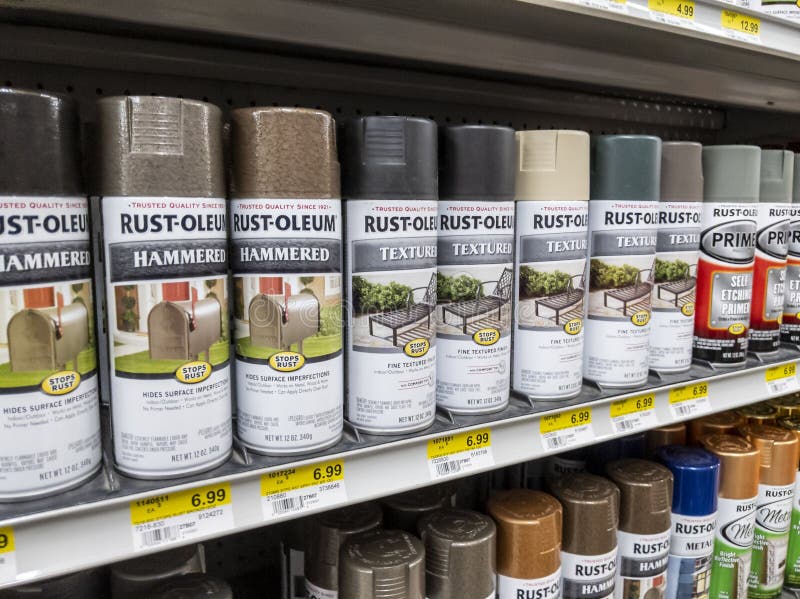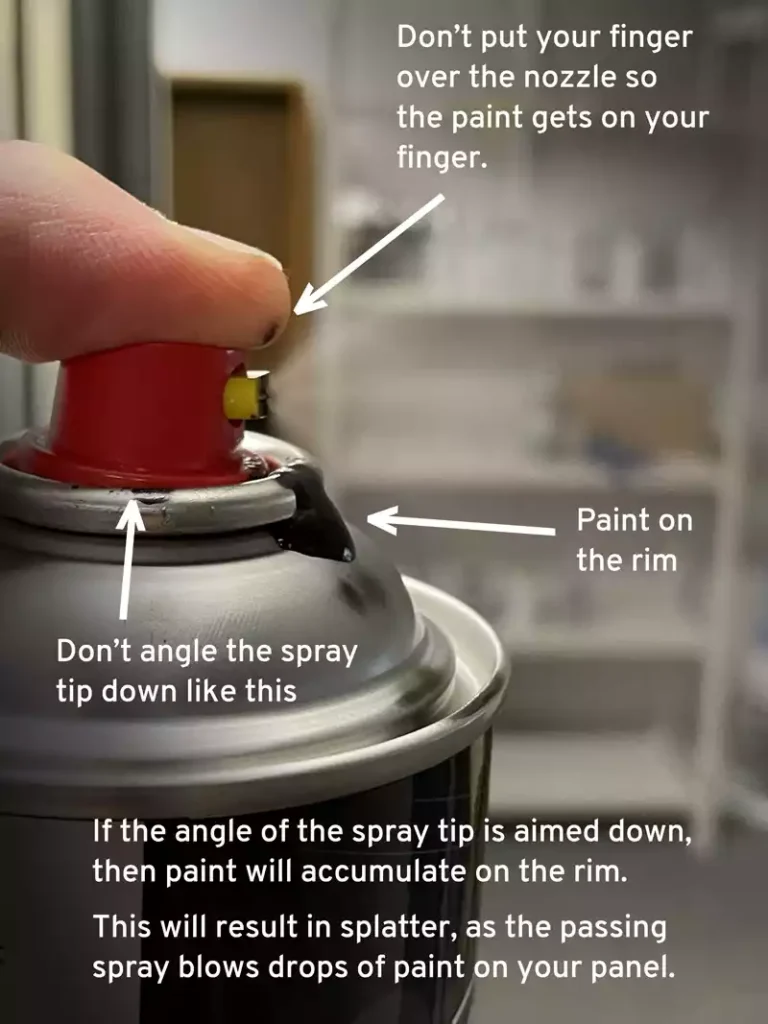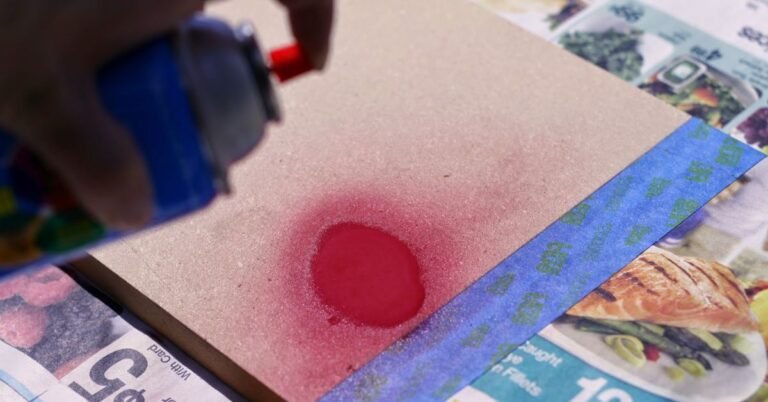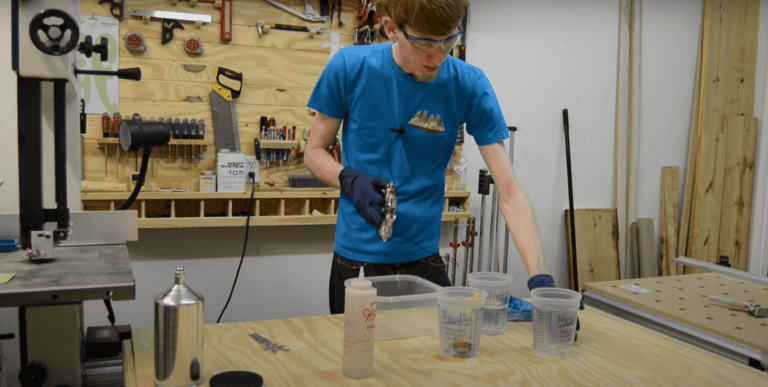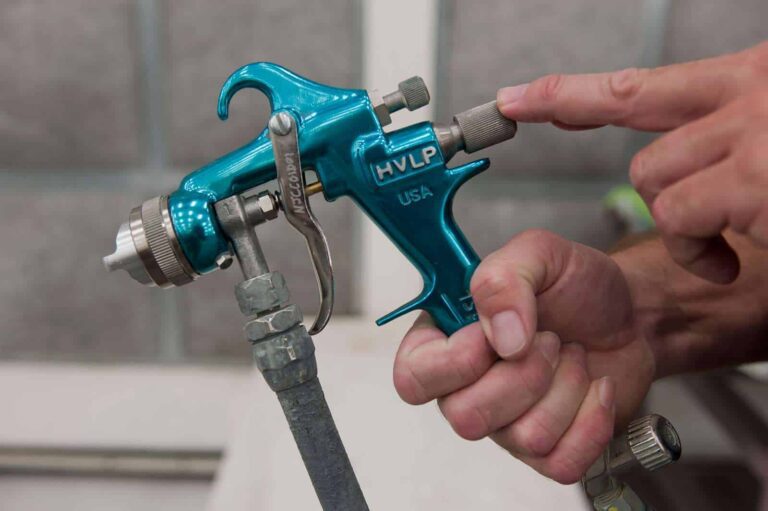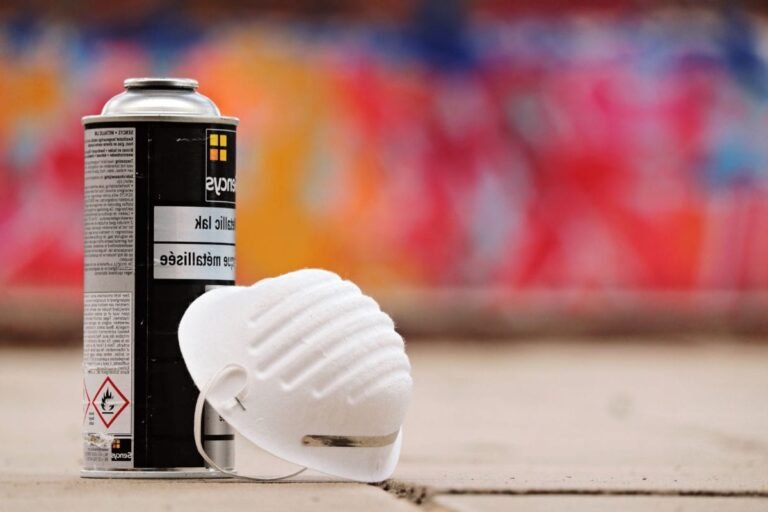Unveiling And The Difference Between RustOleum vs Krylon
The Main Difference Between RustOleum Vs Krylon is Formulation: Rust-Oleum is oil-based, providing excellent coverage, adhesion, and rust prevention, making it suitable for challenging environments and metal surfaces. Krylon, on the other hand, is acrylic-based, offering fast drying, versatility, and good color retention.
Painting projects can transform the look and feel of any surface, but choosing the right paint brand can be overwhelming. In the world of spray paints, two popular names stand out: Rust-Oleum and Krylon.
As an expert in the field of painting, this article aims to delve into the nuances of Rust-Oleum and Krylon, shedding light on their differences and helping you make an informed decision. We will explore their formulations, application methods, finish options, durability, and overall performance.
| Aspect | Rust-Oleum | Krylon |
|---|---|---|
| Formulation | Oil-based | Acrylic-based |
| Application | Convenient spray cans with comfort grip triggers | Convenient spray cans with user-friendly nozzles |
| Finish Options | Glossy, satin, matte, textured, metallic, hammered | Vibrant colours, speciality finishes (glitter, stone, camouflage) |
| Durability | Excellent resistance to weathering, chemicals, and abrasion | Good durability and resistance to fading |
| Suitable for | Challenging environments, metal surfaces | Versatile applications, quick-drying, less likely to yellow over time |
Formulation
Both Rust-Oleum and Krylon offer a wide range of products suitable for various painting needs. Rust-Oleum is renowned for its oil-based formula, which provides excellent coverage, adhesion, and rust prevention.
Its formulation includes a blend of solvents, pigments, and binders that deliver a tough, protective coating. On the other hand, Krylon primarily offers acrylic-based spray paints, known for their fast-drying properties, ease of use, and compatibility with a variety of surfaces.
Acrylic formulations are also generally less toxic and have low odor levels compared to oil-based paints.
Formulation: The Foundation of Quality Paints
The most fundamental difference between Rust-Oleum and Krylon lies in their formulations.
| Aspect | Rust-Oleum | Krylon |
|---|---|---|
| Base | Oil-based | Acrylic-based |
| Drying Time | Longer | Faster |
| Odor | Stronger | Less odor |
| Toxicity | Higher | Lower |
| Adhesion | Excellent on metal | Good on multiple surfaces |
Rust-Oleum: A Finish for Every Need
Rust-Oleum’s diverse array of finishes is designed to meet both aesthetic preferences and functional demands. Their glossy finish is a popular choice for those seeking a shiny, high-sheen look, often used for automotive projects or furniture. The matte finish offers a no-glare, modern appearance, ideal for home decor and arts and crafts. For a balance between the two, satin finishes provide a subtle sheen without the high reflection of gloss.
The brand also excels in textured paints, which can give surfaces a unique feel and appearance, such as a sandstone or pebble finish, often used to disguise imperfections on used items or to give a new life to garden ornaments. Metallic finishes mimic the look of metal, adding a touch of elegance to any object, while hammered finishes create a dimpled look, ideal for hiding surface flaws.
Rust-Oleum’s speciality finishes, like high-heat paints, are engineered for durability under extreme conditions, and suitable for grills and radiators. These functional finishes offer visual appeal and practical benefits, such as heat resistance and additional protection.
Krylon: Vibrancy and Specialty in Color
Krylon, while offering the standard glossy, matte, and satin finishes, is particularly known for its vibrant colour selection that remains true even after drying. This brand’s strength lies in its speciality finishes, which allow for creative expression in projects.
Glitter paints add sparkle to any surface, commonly used for festive decorations or craft projects. Stone finishes give the illusion of natural stone, a creative touch for interior items or art pieces.
The camouflage paints are designed for outdoor use, providing a flat, non-reflective finish that blends with natural environments, favoured for hunting gear or landscape fixtures.
Finish Durability and Use Cases
Beyond the visual impact, the choice of finish has implications for the durability and maintenance of the painted object. Glossy and metallic finishes tend to be easier to clean and may show fingerprints and dust less than matte surfaces. However, matte and textured finishes are excellent for concealing imperfections and can add depth to the visual design.
Whether aiming for elegance, practicality, or a particular thematic effect, both Rust-Oleum and Krylon offer finishes that go beyond aesthetics to enhance the longevity and purpose of your paint job.
Use Cases and Demonstrations: Step-by-Step Guide
Rust-Oleum: Protecting Outdoor Metal Furniture
Step 1: Preparation
- Clean the furniture to remove any rust, dirt, or grease.
- Sand the surface lightly with fine-grit sandpaper to ensure the new paint adheres well.
- Wipe down with a tack cloth to remove dust.
Step 2: Safety and Setup
- Set up your workspace in a well-ventilated area, preferably outdoors.
- Lay down a drop cloth to protect the surrounding area.
- Wear safety goggles, gloves, and a mask to protect from fumes.
Step 3: Priming (Optional)
- If the metal is bare or highly rusted, apply a Rust-Oleum primer to ensure better paint adhesion and rust prevention.
- Allow the primer to dry completely, according to the instructions on the can.
Step 4: Painting
- Shake the Rust-Oleum paint can for about a minute to mix the paint thoroughly.
- Hold the can 8-12 inches away from the surface.
- Apply the paint in a sweeping motion, starting and ending each pass beyond the edges of the furniture.
- Apply multiple thin coats instead of one thick coat to prevent drips.
- Allow the paint to dry between coats, as recommended on the label.
Step 5: Finishing Touches
- Once the final coat is dry, inspect for any missed spots and touch up as needed.
- Allow the furniture to cure for 24-48 hours before using it.
Krylon: Revamping Home Decor Items
Step 1: Preparation
- Clean the item with a mild detergent and water to remove any dust and oils.
- Sand with fine-grit sandpaper if the surface is glossy to help the paint stick.
- Wipe down with a damp cloth and allow to dry.
Step 2: Safety and Setup
- Protect your workspace with newspapers or a drop cloth.
- Use a well-ventilated space, and wear a mask and gloves.
Step 3: Painting
- Shake the Krylon spray can vigorously for two minutes.
- Test spray on a piece of cardboard to ensure the nozzle works properly.
- Spray the item with a steady back-and-forth motion, slightly overlapping each stroke.
- Apply several light coats, waiting a few minutes between each, as suggested on the paint can.
Step 4: Drying
- Krylon dries to the touch in 10 minutes or less.
- Wait about an hour before handling the item.
- For full cure, allow the item to sit for 24 hours.
Step 5: Inspection and Protection
- Check for even coverage and apply an additional coat if needed.
- For added durability, especially on frequently used items, consider applying a Krylon clear sealant.
Application Methods
When it comes to application, both Rust-Oleum and Krylon offer convenient spray cans, enabling quick and even coverage. Rust-Oleum cans are often equipped with comfort grip triggers, facilitating a controlled and comfortable spraying experience.
Additionally, Rust-Oleum offers specialized nozzles for different applications, such as wide fan patterns or precision spraying. Krylon also provides user-friendly spray nozzles that create fine, consistent mists, allowing for smooth application.
The ease of use of both brands makes them suitable for both professional painters and DIY enthusiasts.
Finish Options
Another important aspect to consider is the variety of finishes available from Rust-Oleum and Krylon. Rust-Oleum provides an extensive selection of finishes, including glossy, satin, matte, textured, metallic, and hammered options.
These finishes cater to different aesthetic preferences and surface types. Krylon, on the other hand, specializes in providing a wide array of vibrant colors and unique specialty finishes, such as glitter, stone, and camouflage.
Whether you desire a classic sheen or a distinct effect, both brands offer a range of finishes to suit your needs.
Durability and Performance
Durability is a critical factor when choosing a paint brand. Rust-Oleum, with its oil-based formula, is known for its exceptional durability and resistance to weathering, chemicals, and abrasion.
This makes it an ideal choice for surfaces exposed to harsh conditions or heavy use. Additionally, Rust-Oleum’s rust-prevention properties make it particularly suitable for metal surfaces.
Read More About: Is Rust Oleum Spray Paint Oil Based or Water Based?
Krylon, with its acrylic-based formulations, offers good durability and resistance to fading. However, it may not be as robust as Rust-Oleum when subjected to extreme conditions or frequent handling.
Krylon’s focus on quick-drying paints is advantageous for projects that require a fast turnaround time. Its acrylic-based paints are also less likely to yellow over time, providing long-lasting color retention.
It’s worth noting that both brands recommend using a clear topcoat to enhance durability and protect the painted surface. Applying a clear coat adds layer of protection against UV rays, moisture, and general wear and tear.
Preparation and Cleanup: Ensuring Optimal Results
Proper preparation and cleanup are pivotal for achieving professional-looking results and extending the life of your paint job. Here’s a detailed guide on how to prepare various surfaces for painting and effectively clean up afterward, ensuring your safety and the longevity of your work.
Surface Preparation
Step 1: Cleaning
- Begin by thoroughly cleaning the surface to remove dust, grease, or any contaminants. For metals, use a degreaser or a wipe with denatured alcohol. For woods, a simple wipe-down with a damp cloth can suffice.
Step 2: Sanding
- Once the surface is clean, sanding is the next step. Use medium-grit sandpaper (around 120-180 grit) for rough surfaces to create a smooth base. For surfaces that have a pre-existing paint or finish, sanding will help create a texture for the new paint to adhere to.
Step 3: Repairing
- Fill in any cracks or holes with a suitable filler. For wood, use wood filler; for metal, a metal epoxy filler may be needed. Once the filler dries, sand it down to level with the rest of the surface.
Step 4: Priming
- Apply a primer to help the paint adhere better and to extend the durability of the paint job. For Rust-Oleum or Krylon, use a primer that is compatible with the paint. Some products may not require a primer; always check the label for recommendations.
Step 5: Taping
- Mask off any areas that you do not want to paint using painter’s tape. This includes hinges, handles, and edges that may require a clean line.
Painting Demonstration
Step 1: Testing
- Before starting your project, test the spray paint on a piece of cardboard to get a feel for the spray pattern and flow.
Step 2: Application
- Shake the can for a minute or two, and start spraying in a steady back-and-forth motion, overlapping each stroke. Hold the can approximately 8-12 inches away from the surface. Apply multiple thin coats instead of one thick coat to avoid drips.
Step 3: Drying
- Allow the first coat to dry to the touch (usually within 20 minutes for Krylon and a bit longer for Rust-Oleum, depending on the product line). Apply subsequent coats as needed, following the same process.
Step 4: Final Touches
- After the final coat, remove the painter’s tape while the paint is still slightly tacky to ensure clean edges.
Cleanup
Step 1: Ventilation
- Keep the area well-ventilated during and after painting to avoid inhaling fumes. Open windows or use fans to circulate air.
Step 2: Curing
- Allow the paint to fully cure, which could take anywhere from 24 hours to a week, depending on the paint and environment.
Step 3: Cleaning Spray Nozzles
- To prevent clogging, turn the spray can upside down and spray until only clear gas comes out. Wipe the nozzle with a cloth dipped in mineral spirits if needed.
Step 4: Safe Disposal
- Dispose of empty paint cans and any used cloths or paper in accordance with your local waste management regulations. Many places require aerosol cans to be completely empty before disposal, and solvents like mineral spirits should never be poured down the drain.
Step 5: Storage
- Store any leftover paint in a cool, dry place away from heat sources or extreme cold to maintain its shelf life for future use.
How Are Rustoleum And Krylon Different From Each Other?
Rust-Oleum and Krylon are two well-known brands that specialize in manufacturing and marketing spray paint and coatings. While they share similarities in terms of product functionality, some unique characteristics differentiate them from each other.
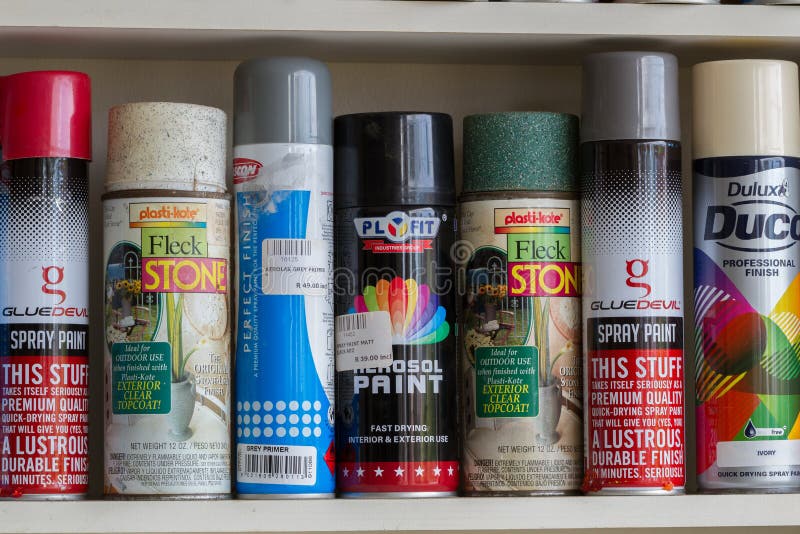
History and Expertise:
Rust-Oleum: Rust-Oleum has operated since 1921 and is recognized for its extensive expertise in rust-preventive coatings. The company is renowned for its innovative formulations designed to protect surfaces from corrosion and rust.
Krylon: Krylon, established in 1947, has a strong reputation for producing high-quality aerosol paints and coatings. The brand has been mainly focused on providing finishes for home décor, crafts, and artistic applications.
Target Markets and Applications:
Rust-Oleum: Rust-Oleum has a wide range of products catering to various industries, including automotive, industrial, marine, and commercial applications. Their products are often used for heavy-duty purposes, such as protecting metal surfaces, industrial machinery, and equipment.
Krylon: Krylon primarily focuses on the consumer market, with products tailored for DIY projects, home improvement, crafts, and artistic endeavors. Their paints and coatings are often used on surfaces like wood, plastic, glass, and ceramics.
Product Formulations and Features:
Rust-Oleum: Rust-Oleum offers a diverse range of coatings, including specialty paints like textured, metallic, and high-heat options. They are known for their rust-preventive properties, durability, and resistance to weathering and chemicals.
Krylon: Krylon emphasizes aesthetic appeal and ease of use. Their product line includes an array of vibrant colors, finishes (such as matte, satin, and glossy), and specialty coatings like glow-in-the-dark or glitter paints. Krylon also offers quick-drying formulas and paints that adhere well to a variety of surfaces.
Brand Perception:
Rust-Oleum: Rust-Oleum is often associated with its reliable and heavy-duty reputation. The brand is known for providing long-lasting protection and restoration solutions for industrial and commercial purposes.
Krylon: Krylon is recognized for its consumer-friendly approach, appealing to hobbyists, DIY enthusiasts, and artists. The brand is often considered a go-to option for creative projects, providing a wide selection of colors and finishes to inspire imaginative work.
Color Range and Matching: Achieving the Perfect Hue
Rust-Oleum and Krylon Color Selection
Rust-Oleum boasts a broad spectrum of colors across its various product lines, offering everything from muted earth tones to vibrant hues. Their range includes specialty colors, such as metallics and fluorescents, which can add a striking finish to any project.
Krylon, renowned for its artistically inclined selections, presents a dazzling array of colors, including options for fine arts, crafts, and home décor. The brand has made a name for itself with finishes like the vivid, high-gloss colors that pop, as well as the more subdued, matte tones for understated elegance.
Color Matching Services
Both brands understand the importance of color precision in projects. Here’s how they cater to those needs:
- Rust-Oleum: They provide a color-matching app that allows users to take a photo of the color they wish to match and find the closest Rust-Oleum product. The app also suggests complementary colors, which is helpful when planning a project with multiple hues.
- Krylon: While Krylon does not offer a dedicated color-matching app, their extensive color range and detailed color swatches both online and in stores help users manually select the closest match to their desired color.
Use Cases and Demonstrations
To demonstrate the effectiveness of color matching, let’s walk through a use case step by step:
Step-by-Step Guide: Matching and Painting a Vintage Chair
- Identify the Color: You have an antique chair that you want to restore. The goal is to match the existing color, which has faded over time.
- Color Matching: Using Rust-Oleum’s color-matching app, take a photo of the chair in natural light to avoid color distortion. The app will then provide you with the closest color options available.
- Purchase the Paint: Once you’ve selected the closest match, purchase the suggested Rust-Oleum spray paint from your local hardware store or an online retailer.
- Preparation: Clean the chair thoroughly and sand any rough spots. If starting with bare wood or metal, apply a suitable primer to ensure good adhesion.
- Testing: Before applying paint to the chair, test the color on a small, inconspicuous area or a separate piece of scrap material to confirm it’s the desired match.
- Painting: Hold the can about 10-12 inches away from the chair and spray in a steady back-and-forth motion, slightly overlapping each stroke. Apply multiple light coats, allowing time to dry in between, rather than one heavy coat to avoid drips.
- Finishing Touches: Once dry, evaluate the chair for any missed spots or uneven areas. Apply additional coats as necessary.
- Protection: After the final coat has dried completely, apply a clear protective topcoat to seal the paint and protect the chair from wear and tear.
- Curing: Allow the chair to cure for the recommended time before using it. This could be anywhere from 24 hours to a week, depending on the paint and environmental conditions.
Rustoleum Vs Krylon For Wood?
Rust-Oleum:
- Offers a range of paints and coatings for wood surfaces.
- Rust-Oleum Painter’s Touch provides excellent coverage, durability, and a smooth finish.
- Varathane wood stains penetrate deep into the wood grain, enhancing its natural beauty and providing protection.
- Stops Rust Protective Enamel can be used on wood for rust prevention and durability.
- Known for durability, adhesion, and versatility.
Krylon:
- Provides a variety of paints and coatings suitable for wood applications.
- Fusion All-In-One offers excellent adhesion without the need for sanding or priming.
- Dual Superbond combines a primer and paint in one for easy application.
- Exterior Semi-Transparent Wood Stain enhances the wood grain and protects against weathering.
- They are known for ease of use, quick drying time, and versatility.
Limited Editions or Specialty Products
Limited edition colors and specialty products are unique offerings that can set a paint brand apart from its competitors. These products are often released in response to trending styles, seasonal demands, or innovative advancements in paint technology. They cater to consumers looking for something beyond the standard palette or finish, allowing for customization and distinction in their projects.
Rust-Oleum’s Specialty Offerings:
Rust-Oleum frequently introduces specialty products that serve specific purposes or provide unique aesthetic qualities. For example, they might offer a limited edition metallic finish in a color that reflects the Pantone Color of the Year. Such offerings allow enthusiasts and professionals to stay current with design trends. Rust-Oleum also has a range of products like high-heat resistant paints for barbecues and radiators or chalkboard paint that transforms surfaces into writable areas, perfect for interactive spaces or children’s rooms.
Krylon’s Unique Selections:
Krylon is known for its vibrant array of colors and finishes. They might release a seasonal collection of spray paints, with shades curated to match the tones of autumn leaves or the bright hues of spring flowers. Krylon’s Glitter Blast series is another example, which provides intense sparkling finishes for decorative items and crafts, ideal for festive occasions or adding a touch of glamour.
The Importance of Limited Editions:
Limited edition and specialty products often come in a finite supply, creating a sense of urgency and exclusivity for buyers. They are also a way for brands to test new formulations and gather consumer feedback before committing to a permanent line. For the consumer, these products provide an opportunity to engage in creative projects with a fresh perspective, experimenting with new looks that can’t be achieved with standard paints.
Marketing and Consumer Appeal:
From a marketing standpoint, limited editions create a buzz around the brand, often leading to increased engagement on social media as consumers share their unique projects. These products are also a way for brands to align themselves with current events or social movements, such as releasing a color series in support of certain causes or festivities.
Price Comparison: Budget-Friendly Options
When embarking on a painting project, the cost of materials is a crucial consideration for hobbyists and professionals alike. In the comparison between Rust-Oleum and Krylon, price plays a significant role and can influence consumer preference.
Krylon: Accessible Quality
Krylon is often perceived as the more budget-friendly option, with pricing that appeals to cost-conscious DIYers. The brand’s affordability does not compromise the quality, as it offers a comprehensive range of colors and finishes that are both attractive and functional. The slightly lower price point of Krylon products is particularly appealing when undertaking large projects or when frequent reapplication is anticipated, such as in seasonal crafts or temporary decorations.
Rust-Oleum: Investment in Durability
On the other hand, Rust-Oleum’s products are typically positioned at a slightly higher price bracket. This is reflective of their robust formulations designed for maximum durability and protective qualities, especially in their specialty lines like marine coatings or automotive paints. The investment in Rust-Oleum can be justified for projects where longevity and resistance to the elements are paramount, such as outdoor furniture, metal fixtures, and industrial equipment.
Comparing Apples to Apples
It’s important to note that comparing prices between Rust-Oleum and Krylon should be done on a product-by-product basis. Specialty paints, for instance, may carry a premium over standard finishes in both brands. Moreover, the quantity of paint needed, the potential requirement for primers or topcoats, and the surface to be covered will also affect the overall cost.
Finding the Best Deals
Shoppers may find that prices fluctuate based on retailers, seasonal sales, or discounts on bulk purchases. Savvy consumers often compare prices across multiple outlets, take advantage of sales, and look for coupons to get the best deal on their chosen brand and product type.
In summary, while Krylon presents itself as a more affordable option upfront, Rust-Oleum’s pricing reflects its specialized formulas and might offer better long-term value for certain projects. Ultimately, the choice may come down to the specific needs of the project and the initial budget allocated for paint supplies.
Can Rust-Oleum/Krylon paints be used on all types of wood?
Both Rust-Oleum and Krylon paints can be used on most types of wood, including hardwoods and softwoods. However, it’s important to check the product labels to ensure compatibility with the specific type of wood you’re working with.
Are Rust-Oleum/Krylon products suitable for outdoor wood projects?
Yes, both Rust-Oleum and Krylon offer products that are designed for outdoor wood projects. These products are formulated to provide protection against UV rays, moisture, and other weathering elements.
Do I need to sand or prime the wood before using Rust-Oleum/Krylon paints?
The need for sanding or priming depends on the specific product you choose.
Some Rust-Oleum and Krylon paints, like the Fusion All-In-One and Dual Superbond, are designed to adhere well to various surfaces, including wood, without the need for sanding or priming.
However, it’s always recommended to read the product label for any specific instructions.
How long does it take for Rust-Oleum/Krylon paints to dry on wood?
The drying time can vary depending on factors such as temperature, humidity, and the specific product used.
In general, Rust-Oleum and Krylon paints dry to the touch within 30 minutes to an hour, but full curing and hardening may take up to 7-14 days.
It’s important to follow the recommended drying and curing times provided by the manufacturer.
Can I apply Rust-Oleum/Krylon paints over an existing finish on wood?
It is generally recommended to remove any existing finish, such as varnish or paint, before applying a new coat of Rust-Oleum or Krylon paint.
Proper surface preparation ensures better adhesion and long-lasting results.
However, some Rust-Oleum and Krylon products may provide good adhesion over certain finishes, but it’s always advisable to test on a small inconspicuous area first.
Consumer Reviews: Real-World Feedback
By analyzing feedback from various DIY forums, home improvement blogs, and e-commerce platforms, a clearer picture emerges regarding how these paints hold up in everyday use.
Rust-Oleum: The Stalwart of Durability
Rust-Oleum consistently receives accolades for its resilience and long-lasting protection, particularly on metal surfaces that are prone to rust and corrosion. Users commend the paint for its ability to withstand harsh weather conditions, resist chipping and fading, and maintain its finish over years of use.
This durability is frequently highlighted in reviews of their protective enamels and rust-preventive lines, which are sought after for outdoor furniture, automotive parts, and garden tools.
Krylon: Quick and Colorful Solutions
Krylon, in turn, is often celebrated for its fast-drying nature, a feature that is particularly advantageous for time-sensitive projects or those with multiple layers. Reviewers also rave about the extensive color palette Krylon offers, appreciating the vibrant and true-to-cap hues that bring their creative visions to life.
The brand’s dedication to color and finish variety is particularly noted in feedback for its line of specialty paints, which includes options like chalky finishes and neon colors, ideal for crafts and home decor.
Consumer Tips and Tricks
Within the reviews, consumers also share valuable tips. For Rust-Oleum, many suggest patience with the longer drying times, emphasizing that the wait yields a tougher finish. For Krylon, users often advise multiple light coats to achieve the best results and prevent drips, capitalizing on the quick dry time to layer efficiently.
Overall, while both brands serve the fundamental purpose of painting and protecting surfaces, consumer feedback highlights Rust-Oleum’s edge in durability and Krylon’s lead in quick completion and color vibrancy. These insights from real-world experiences can be instrumental in guiding consumers to the right product choice for their specific project needs.
Conclusion
In conclusion, both Rust-Oleum and Krylon offer a range of high-quality paints and coatings for wood applications. Rust-Oleum is known for its durability, adhesion, and versatility, providing options for both painting and staining wood surfaces.
Krylon, on the other hand, is recognized for its ease of use, quick drying time, and versatility. Both brands have specific products designed for outdoor wood projects, and it’s important to check the product labels for compatibility with different types of wood.
Jane Ansems is a highly talented and accomplished spray can artist, known for her intricate, detailed, and thought-provoking works of art. She began her career as a street artist in the early 2010s, quickly gaining recognition for her unique and innovative style.
